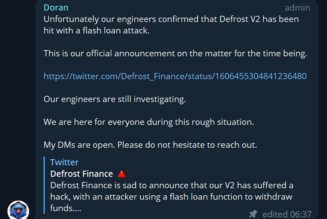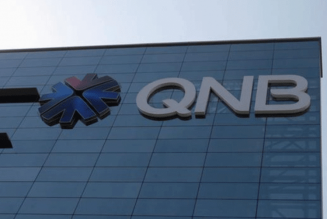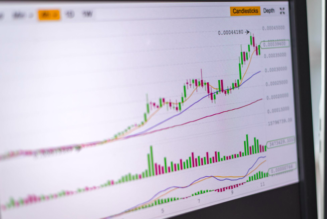Today we’re going to talk about an instrument that’s gaining a great deal of popularity lately—the Exchange Traded Fund, or ETF. While an ETF may not have the same visual appeal as, say, a commodity, which may inspire visions of glimmering gold, sprawling oil fields or towering piles of coffee beans, or shares of today’s top companies, which can make you think of the flashy logos of companies like Apple, Tesla, Netflix or Facebook, you may be surprised to learn that many ETFs actually give you access to these very instruments, albeit in a very different way.
As more and more investors turn to online trading with ETF as CFDs, let’s take some time to unpack exactly what an ETF is, how it factors into the financial markets, and what some of today’s top-traded ETFs are, including the Vanguard S&P 500 ETF.
ETFs 101
To answer the question “What are ETFs?” there are two answers: the long and the short. The long answer is that an Exchange Traded Fund is a kind of security that tracks a market sector, commodity, index, and various other types of assets, and whose price movements can be traded on the stock market. The size of the asset that can be tracked by an ETF can vary, from a single type of commodity (such as gold is tracked by the Gold Trust ETF) to an entire index, which can have several ETFs tracking it, such as the S&P 500 index, which is tracked by the Vanguard S&P 500 ETF among others.
/* custom css */
.tdi_3_ad2.td-a-rec-img{ text-align: left; }.tdi_3_ad2.td-a-rec-img img{ margin: 0 auto 0 0; }
Sound confusing? Don’t worry—that’s what the short answer is for. Think of an ETF as a basket containing a variety of assets that belong to a certain sector of the market, industry, index, or commodity. For example, the Alternative Harvest ETF (tracked at iFOREX as the Global Cannabis ETF) which essentially measures the performance of a range of companies within the global cannabis industry based on the many legalizations of cannabis products and agriculture worldwide. Now say a trader wants to add a little variety to his portfolio (a process called diversification) by exposing it to an industry, rather than a specific company—he may choose to add an ETF with the goal of taking advantage of its price movements in the form of CFDs.
When you participate in online trading with ETF as CFDs, you therefore trade on price movement (in both directions) of the ETF itself, rather than own any actual shares/commodities/etc. We’ll get more into how CFD trading works later. Let’s move onto the various types of ETFs available today.
ETF categories
There are many different types of ETFs to choose from, but for the sake of simplicity we’ll feature five of the most popular:
Commodity ETFs: You already know what commodities are (raw goods that are able to be bought and sold on the markets such as oil, gold, silver, and coffee), and a commodity ETF basically packages up one or more commodities into an instrument whose price movements can be traded. An example of this is the Gold Trust ETF.
Index ETFs: Like the name suggests, an index ETF tracks the performance of an index, such as the Vanguard S&P 500 ETF, which tracks the performance of the US S&P 500, one of the biggest indices in the world.
Sector ETFs: These ETFs track the performance of a certain sector of the stock market that may present a particular interest for investors such as the healthcare sector, financial sector or industry sector.
Stock ETFs: These ETFs are quite similar to an index ETF, and track the performance of a bundle of stocks.
Bond ETFs: One of the least complex types of ETFs, these simply contain a selection of either government bonds, corporate bonds, or state/local bonds.
Investing in ETFs as CFDs
If you’re considering trading with ETF as CFDs, there’s a few things to keep in mind before jumping in. First, there is the choice of which ETFs to trade. How do you choose? There are no hard and fast rules to choosing which ETF instruments to add to your portfolio, but a great place to start is with what you know. For example, if you are already well versed in global indices, and watch the news for alerts about the Vanguard S&P 500 ETF, you may want to consider adding an index ETF to your portfolio, such as the US 500 Long ETF. Another path you could follow is diversification. Say your portfolio currently is made up of mostly foreign currency pairs and you’d like to diversify it by exposing it to a completely different market sector—choosing an ETF like Global Cannabis or even branching out to a commodity ETF like the Gold Trust ETF might be an option to consider.
As trading ETFs as CFDs comes with as many risks as it does opportunities, the more time you spend learning about the details of ETF trading as well as the various ETFs available to trade, the more informed decisions you’ll be able to make.
Trading with ETF as CFDs at iFOREX
iFOREX is a leading CFD broker offering hundreds of financial instruments including many of the ETFs we’ve mentioned as well as commodities, global indices, foreign currency pairs, cryptocurrencies and shares of today’s top companies. With a focus on knowledge and education, iFOREX provides all clients with access to a wide variety of educational materials including trading guides, video tutorials, and 1-on-1 training with a live trading coach who can help develop your skills at your own pace.
Be sure to follow the iFOREX broker social page on both Facebook and Twitter. Following the broker social page of your CFD broker is a great way to learn more about the company as well as pick up helpful market data and insight. Join iFOREX today and embark upon a more knowledgeable trading journey.
Staff writer
/* custom css */
.tdi_4_202.td-a-rec-img{ text-align: left; }.tdi_4_202.td-a-rec-img img{ margin: 0 auto 0 0; }








